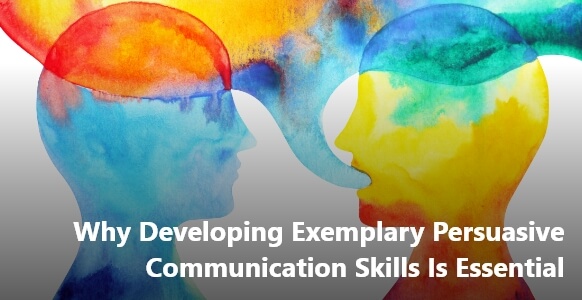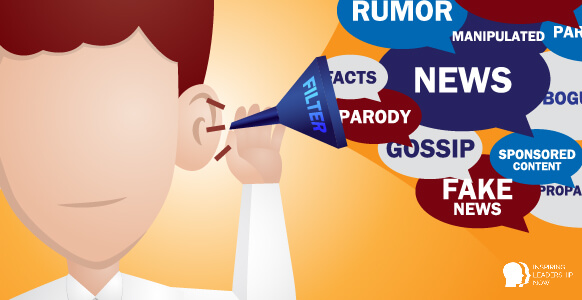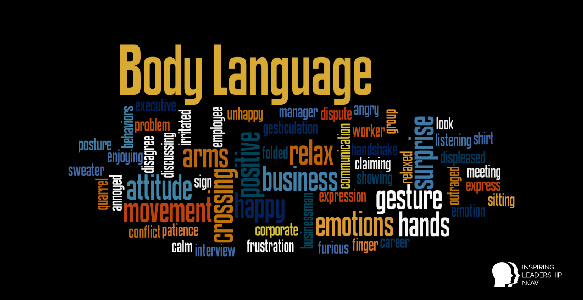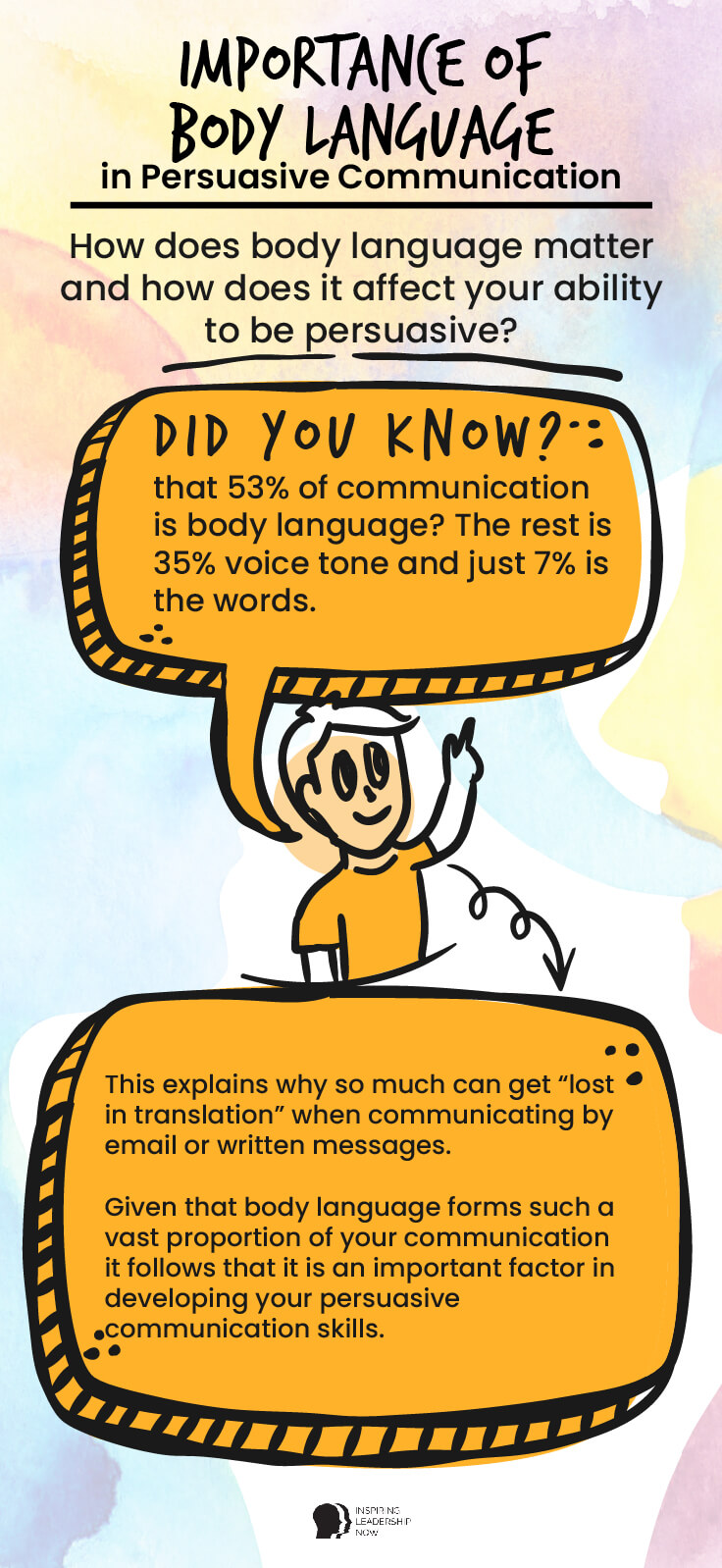Last updated: 28 June 2021

Have you ever wondered how some people are naturally persuasive? Perhaps it brings to mind a coworker or teacher – someone one could get you on board to do a task that initially you didn’t want to do? You might have seen their effect on others too, and wondered – how do they do that? The answer is communication– persuasive communication skills.
The art of persuasion comes down to some specific subtleties in communication. With a little insight and practice, persuasive communication skills are expertise that you can learn and add to your portfolio of abilities, for success both in business and in your personal life.
What Is Communication?
Communication is the interchange of opinions, thoughts, and information using writing, speech, and signs. It is the means by which information, feelings, and emotions are expressed, shared, and heard.
It forms the basis of all relationships, both personal and professional. As such the quality of your communication (and communicative skills) has a direct impact on the quality of your relationships.
In business, the state of communication is demonstrated by how well the business runs, and by the wellbeing of its employees. It plays a fundamental role in the success of the organization, making it an essential skill to master if you are a leader or business owner.
Successful leaders and those with healthy and fulfilling personal relationships outside of work, use communication to establish and build rapport. Rapport is the togetherness that comes from good communication. Successful communicators build this among and between all parties, be it colleagues, friends, or family members.
What Are Persuasive Communication Skills and How Do They Work?
Persuasive communication is a type of communication that focuses on guiding or convincing its audience to adopt certain ideas, actions and attitudes. An effective, persuasive communicator has the capacity to influence others to act in a particular way. A persuasive communicator is able to navigate challenges, resolve conflicts, and articulate plans and resolutions, in an inclusive and considered way.
In transactional business relationships, sales and salesmanship being the most obvious example (we’ll come back to this) persuasive communication is used extensively. However, the wide-ranging benefits of well-developed, persuasive communication skills make it one of the most important skills for any business leader, manager, or employee to possess.
To be truly persuasive in your communications means getting genuine buy-in from your audience. A genuine “yes” comes from positive relationships that are based on trust.
Cultivating trust means that honesty and integrity are fundamental. Without a foundation of honesty and trust, there is no basis for a positive, lasting, or long-term relationship, which spells disaster for both your business or personal life!
Why Work on Those Skills?
Why is it necessary to not settle on mediocre communication skills and instead to learn the science and art of persuasive communication?
Ok, coming back to the field of sales and salesmanship, let’s look at what persuasive communication is not, using the stereotype of the pushy salesman.
This stereotypical figure gets what they want by not taking no for an answer, they don’t listen, they might make false claims, bend or be economical with the truth. They might fool people with empty promises and other strategies to get a quick (superficial) buy-in, for the sake of the sale. All of these methods are severely detrimental strategies to any lasting, long-term business relationship! So, the stereotyped sales figure does not truly embody the art of persuasion.
Yes, this figure might be persuasive, yet in terms of skill, this person is the antithesis (opposite) of what it really is to be a genuinely persuasive communicator. This is because there is a vital element missing that underpins everything – that is honesty. Being a skilled and convincing communicator builds positive relationships that are based on trust. This comes from first and foremost being honest, being true to yourself – and upfront with others.
It also comes from taking time to understand your target audience. Whether this is your team, your end-user, your social group, family, or conference participants. You establish the objectives and interests of your audience by listening to their objections and opinions. Listening is fundamental; being a good listener defines one of the major skills of being an effective, persuasive communicator.
Simply put, persuasive communication not only gives you the edge in motivating and engaging your people, it also goes hand in hand with good management and good listening skills. So why not work on those skills?
What Are Persuasive Communication Skills and How to Improve Them?
Here are some practical tips on how to develop and exhibit exemplary communications skills with the help of some simple and effective (tried and tested) techniques based in NLP, that’s Neuro-Linguistic Programming, FYI. These techniques all have one thing in common, they build rapport, the togetherness that comes from understanding. The importance of rapport cannot be understated, it forms the foundational building blocks in any relationship.
Listening
You know how good it feels when you are making a point and the person listening really “gets” you. This is because the person to whom you have been communicating was really listening. And good listening is what establishes rapport.
According to the Management Training Guru, people get fed up with communicators who talk more, particularly when they go off-topic. Listening is a skill in itself. To hone your skills first know that there are 5 types of listening:
Non-Listening

This is self explanatory – the listener is not attending to the person communicating but might add occasional signals to imply some level of connection. It looks like a lack of rapport, where the listener seems distracted or bored, or both. It feels disrespectful and frustrating because the speaker doesn’t feel acknowledged, understood, or heard.
Filtered Listening (Partial Listening)

Here, the listener is only listening to what is of interest to their experience. All information is filtered and applied to themselves. This looks like the listener is alternating between looking distracted or bored and interrupting the speaker, impatient to have their say or to tell the speaker how they ‘should’ do things.
It feels like assumptions are being made; that the listener is more interested in their own opinion than that of the speaker; or has already made decisions about what they think should be the outcome. It is frustrating, unfulfilling, and disempowering to be on the receiving end.
Solution-Focused or Directive Listening
This is common in business settings. Here the listener is engaged with focused attention but gives uninvited feedback or interpretation to demonstrate empathy, or (commonly) to encourage the listener in a specific direction. It looks like there are high levels of rapport, engagement and connection.
However, the solutions that the listener offers may not be the speaker’s own, which can be disempowering. This type of listening is appropriate if the speaker is actively and specifically seeking advice or direction from someone who has more experience.
Active Listening
This is engaged, powerful, non-judgemental listening that holds the space for the speaker without interpreting or polluting their experience. It looks like the speaker is ‘held’ by the listener, with complete attention and focus, and space. It feels like a nurturing space in which the speaker has the full attention of the listener.
360 Degree Listening – Listening in High Definition
So this is the creme de la creme of listening – and is what persuasive communication skills are based upon. This is Active Listening ‘and some.’ In addition to giving full undivided, unbiased attention, the listener also pays attention to more than just the words being spoken. The listener is noticing the energy in the room, is looking at body language, noticing tone of voice, pauses and the linguistic style of the speaker. This is listening at every level, hence 360 degrees.
Body Language

Why – how does body language matter and how does it affect your ability to be persuasive?
Imagine you are addressing a coworker in a meeting and they turn away, perhaps it’s a subtle movement of shifting their gaze away and turning their shoulders. You notice that, right? That gesture signals, “I am not interested,” or, “there is something more interesting going on over there,” (not in your direction).
Conversely, imagine that you are interviewing for a role. Your interviewers are leaning forward, looking at you, with their feet pointed in your direction, nodding. This is a set of strong, positive signals that encourages you to go on.
In NLP terms, the way to build rapport and increase your ability to be persuasive is to subtly match and mirror the gestures of the speaker. This means subtly matching and mirroring how they are sitting, standing, or moving.
Note, if this is done too blatantly it is an instant rapport breaker, subtle is key! As an example, you might match the position your colleague is sitting in, or if they run their left hand through their hair, you might do the same with your right hand. If you notice they cross their legs and lean forward, you might cross yours and lean in, and so on.
It is becoming conscious of these signals that you unconsciously send out, and choosing what to say with your body that will make or break rapport, and that adds to your persuasive skills. Through matching and mirroring body language you demonstrate to the speaker that you are on the same team, that you understand and care, thus building trust and winning their confidence.

Linguistic Style
Let’s build on that, taking the mirroring a step further into linguistic style. Linguistic mirroring is getting to know the other persons’ style of communicating and then applying that same style to the material you are presenting.
Recent research in the Harvard Business Review found that lawyers and legal teams that mirrored the linguistic styles of presiding judges were ‘significantly more likely to win their cases. Meaning, that by matching/mirroring the same linguistic style as the judges’, the lawyers were able to be more persuasive.
To get familiar with your own and your teams’ linguistic styles and the way you/they internally create the model of the world (which in NLP is known as “meta modeling”) – pay attention. Start to listen and notice, how do they articulate their thoughts and ideas and respond to questions and counter-arguments?
- For example, when they communicate do they give off an air of confidence, or are they more modest?
- To what extent are they persuaded by expert opinions and endorsements?
- To prove a point do they prefer anecdotal evidence and storytelling, or facts and data?
- When they feedback on others’ work, what arguments do they identify as most persuasive?
- How much do they show or convey their emotions versus remaining detached? When do they tell personal stories and how much vulnerability is expressed?
- When proving a point of asking a question, are they animated and emotional or calm and collected?
- Do they tend to go towards the positives or move away from negatives?
- When they have done a good job do they “just know” (an internal frame of reference) or does this approval come from a manager or supervisor (an external frame of reference)?
- When making decisions do they look at what’s in it for them personally (sorting by self), or do they put others before themselves (sorting by others)?
- How do they prefer to communicate, is it a write-up, a Powerpoint presentation, or a conversation?
With this kind of information, you can identify a linguistic style, and understand what motivates your colleague. This means that when you prepare your presentation, pitch your next new idea to the board of Directors or stakeholders, that you align the content and how you present it with their preferences.
For example, say you are pitching to a board of stakeholders, knowing that one individual is always difficult to win over. This individual is quite modest is rarely swayed by endorsements and opinion, you know that’s a red flag to them.
They are a numbers person, preferably well-presented data on Powerpoint. Whenever they comment on other projects it always comes down to figures and percentages. They occasionally tell personal stories and are very composed. They are often the ones at the meeting suggesting the counter-direction to what is being proposed – looking at worst-case scenarios and how best to avoid them.
To appeal to this individual, you make a well-prepared and presented Powerpoint, including all the figures and all relevant data, perhaps with a take-home profile to refer to, post-meeting. You let the stats do the talking and keep your presentation style modest and cool, at most you might include one non-emotional personal story if rapport is flowing – matching and mirroring their body language to ensure it is.
Recalling that this person moves away from negatives, you prepare your information with this in mind, presenting the case for avoiding potentially harmful business scenarios (and towards what it is you are suggesting). You might even say that “most people may find this counter-intuitive, however…” because this taps into their counter-directive stance.
Persuasive communication skills come not simply from the merits of your arguments, but also from the way you deliver those arguments, as shown by the HBR research in Administrative Science Quarterly.
If you take time to develop rapport and become familiar with those you are trying to influence, to match and mirror their body language and linguistic style you are at a significant advantage in your ability to persuade others of your point of view.
>> Related Article: Remote Leadership And Effective Communication: How To Communicate With Your Team Effectively And Give Support During Crisis
Key Takeaways
Successful, persuasive communication comes from developing rapport. This is done by listening, 360 listening, and communicating in a way that demonstrates that you are on the same team by matching and mirroring body language and linguistic style.
To influence others, pay attention – listen and notice, how do they reason? How do they articulate their thoughts and ideas and respond to questions and counter-arguments? How do they operate?
If you can be authentic and honest in front of your audience you are a big step towards persuading them because they will trust you. Linguistic mirroring can be a powerful tool for persuading a client to buy your product or use your service.
However, there is an ethical note here; ensure that you are presenting an honest representation of your offering with respect to your client’s needs. And not using your persuasion to manipulate any client, or other people, into making a poor choice.
Used with integrity, persuasive communication skills create positive and harmonious relationships and offer a significant influence. Let’s choose to use that influence for good.


